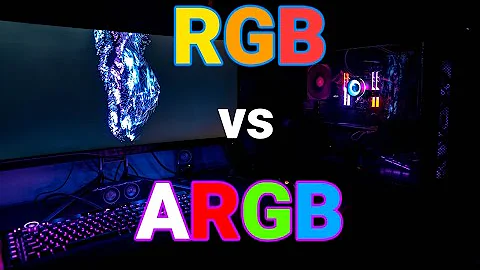Converting ARBG to RGB with alpha blending
Solution 1
It's called alpha blending.
In psuedocode, assuming the background color (blend) always has 255 alpha. Also assumes alpha is 0-255.
alpha=argb.alpha()
r = (alpha/255)*argb.r() + (1 - alpha/255)*blend.r()
g = (alpha/255)*argb.g() + (1 - alpha/255)*blend.g()
b = (alpha/255)*argb.b() + (1 - alpha/255)*blend.b()
note: you probably need to be a bit (more) careful about floating-point/int math and rounding issues, depending on language. Cast intermediates accordingly
Edited to add:
If you don't have a background color with an alpha of 255, the algebra gets alot more complicated. I've done it before and it's a fun exercise left to the reader (if you really need to know, ask another question :).
In other words, what color C blends into some background the same as blending A, then blending B. This is sort of like calculating A+B (which isn't the same as B+A).
Solution 2
I know this is an old thread, but I want to add this:
Public Shared Function AlphaBlend(ByVal ForeGround As Color, ByVal BackGround As Color) As Color
If ForeGround.A = 0 Then Return BackGround
If BackGround.A = 0 Then Return ForeGround
If ForeGround.A = 255 Then Return ForeGround
Dim Alpha As Integer = CInt(ForeGround.A) + 1
Dim B As Integer = Alpha * ForeGround.B + (255 - Alpha) * BackGround.B >> 8
Dim G As Integer = Alpha * ForeGround.G + (255 - Alpha) * BackGround.G >> 8
Dim R As Integer = Alpha * ForeGround.R + (255 - Alpha) * BackGround.R >> 8
Dim A As Integer = ForeGround.A
If BackGround.A = 255 Then A = 255
If A > 255 Then A = 255
If R > 255 Then R = 255
If G > 255 Then G = 255
If B > 255 Then B = 255
Return Color.FromArgb(Math.Abs(A), Math.Abs(R), Math.Abs(G), Math.Abs(B))
End Function
public static Color AlphaBlend(Color ForeGround, Color BackGround)
{
if (ForeGround.A == 0)
return BackGround;
if (BackGround.A == 0)
return ForeGround;
if (ForeGround.A == 255)
return ForeGround;
int Alpha = Convert.ToInt32(ForeGround.A) + 1;
int B = Alpha * ForeGround.B + (255 - Alpha) * BackGround.B >> 8;
int G = Alpha * ForeGround.G + (255 - Alpha) * BackGround.G >> 8;
int R = Alpha * ForeGround.R + (255 - Alpha) * BackGround.R >> 8;
int A = ForeGround.A;
if (BackGround.A == 255)
A = 255;
if (A > 255)
A = 255;
if (R > 255)
R = 255;
if (G > 255)
G = 255;
if (B > 255)
B = 255;
return Color.FromArgb(Math.Abs(A), Math.Abs(R), Math.Abs(G), Math.Abs(B));
}
Solution 3
if you don't need to know this pre-render, you could always use the win32 method of getpixel, I believe.
Note: typing on iPhone in the middle of Missouri with no inet access. Will look up real win32 example and see if there is a .net equivalent.
In case anyone cares, and doesn't want to use the (excellent) answer posted above, you can get the color value of a pixel in .Net via this link MSDN example
Related videos on Youtube
Bob
Updated on April 15, 2022Comments
-
Bob about 2 years
Let's say that we have an ARGB color:
Color argb = Color.FromARGB(127, 69, 12, 255); //Light Urple.When this is painted on top of an existing color, the colors will blend. So when it is blended with white, the resulting color is
Color.FromARGB(255, 162, 133, 255);The solution should work like this:
Color blend = Color.White; Color argb = Color.FromARGB(127, 69, 12, 255); //Light Urple. Color rgb = ToRGB(argb, blend); //Same as Color.FromARGB(255, 162, 133, 255);What is
ToRGB's implementation?-
 Matt Dawdy over 6 yearsI just want to say that I find it awesome that "Light Urple" has survived 4 edits.
Matt Dawdy over 6 yearsI just want to say that I find it awesome that "Light Urple" has survived 4 edits.
-











